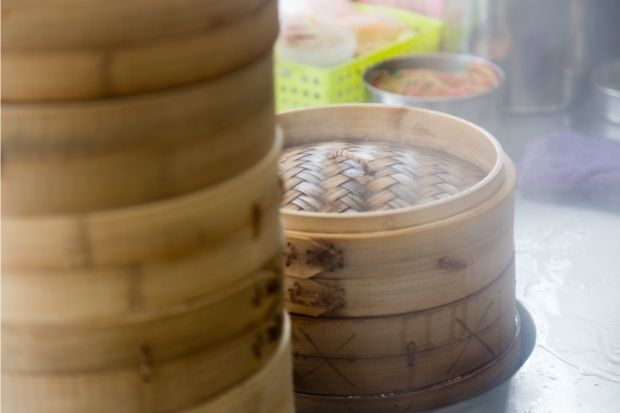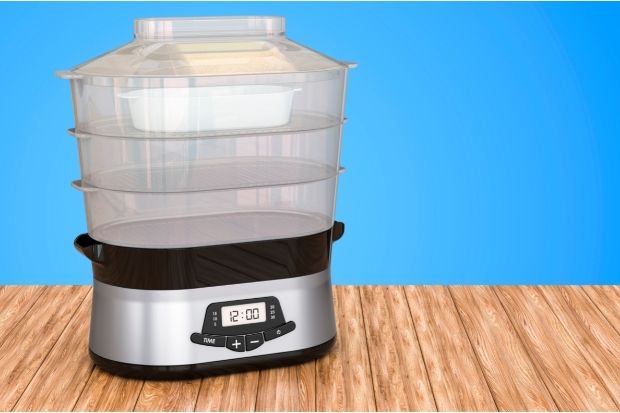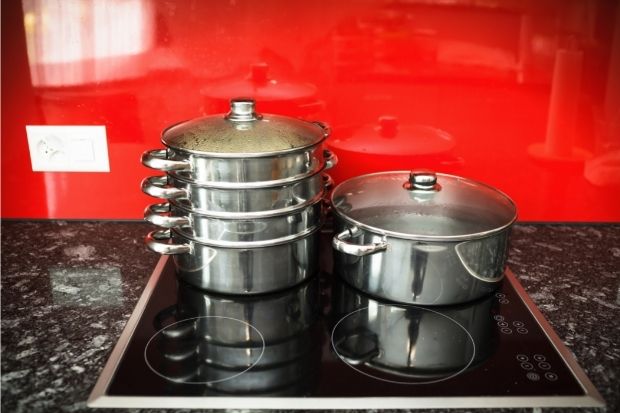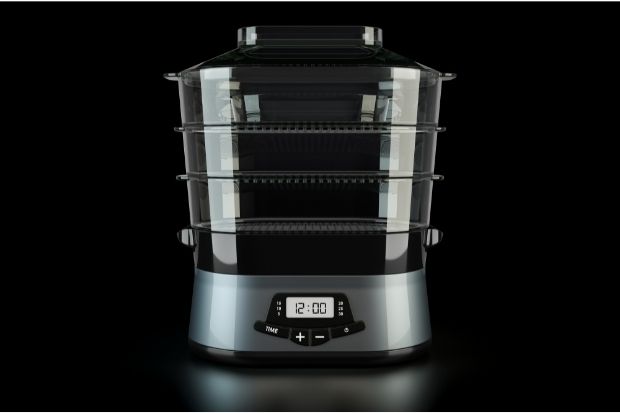Steaming buns isn’t difficult. There are numerous devices that can help you get perfectly soft and moist buns to complement your next Asian feast.
Many people have bamboo steamers that can quickly and easily steam their buns, but what if you don’t have a traditional bamboo steamer and you’re dying to steam buns for your next meal?
To steam buns without a bamboo steamer, use a tabletop steamer, a metal pan steamer, or a basic method involving a wok.
What Are Bamboo Steamers?

Bamboo steamers are sets of interlocking bamboo containers that stack on top of one another. The steamers can accommodate all types of food, including vegetables, rice, and even cakes and other desserts. You set them on top of either a wok or a pan that contains boiling or simmering water to get the food steamed just right. It’s a super-easy and convenient way to make sure that your foods get steamed properly and taste delicious.
Let’s take a look at the three main types of steaming methods that you can use when you don’t have a bamboo steamer in your kitchen:
1. Tabletop Steamers

There are tabletop steamers that are usually used to cook vegetables, and they collect so much steam that you have to make sure that you follow the directions exactly as they are printed. The first thing you do is line the steamer with some type of greaseproof paper so that the food stays fresher, then place the bun in the steamer, leaving some space in the container so the bun isn’t touching one another or touching the edges of the steamer.
After you do this, you simply cover the lid with a clean towel, then place the lid over the top of the device. What this does is simple: it collects any excess condensation that might otherwise drip onto your buns and cause sogginess. At this point, simply continue steaming your buns until they are done.
2. Metal Pan Steamers

Metal steamers with metal or glass lids can be used to steam buns. You start the same way you would with a regular tabletop steamer: line the metal steamer itself with greaseproof paper. Remember never to put an overabundance of water in the device. You should also allow some space between the edges of the bun and the edges of the steamer. Take a small towel and cover the pan with it, which helps to absorb the condensation, and then place the lid on top of that.
As you can tell, the above two methods are very similar and are great at steaming the perfect buns for your next meal.
3. The ‘Wok’ Method

This alternative method doesn’t involve an actual steamer, but it works like a charm. Start by putting a tiny amount of water in a wok. Then place a small bowl in the wok. Next, take a plate and line it with greaseproof paper and place this on top of the bowl. For this step, feel free to use a large saucepan instead of a bowl if you prefer. Finally, bring your water to a boil and place the buns on top of the greaseproof paper.
As the steam process is taking place, place a tall lid on the wok, or a flat lid on your saucepan, and wait for the device to work its magic. This is a simple, fast way to make sure that your buns are steamed and are nice and fluffy and ready to eat.
How Effective Are They?
One of the things you’ll like about each of the methods mentioned above is that they make steaming buns both fast and simple. Each method takes around eight to nine minutes to complete, and they are all relatively inexpensive as well. The fact is that when you’re steaming buns, veggies, cakes, or anything else, you don’t need a large, expensive steamer. All you need is a regular steamer or a home device that involves a wok, bowl, and plate!
